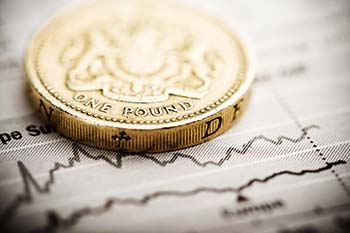
After hitting a 16-month high against the Euro and a 4 ½ year high against the US Dollar last week, the Pound spent much of the last five days declining against its major rivals.
Sterling first came under pressure as investors engaged in a bit of profit taking at the beginning of the week.
Then on Wednesday the Pound posted widespread declines as the hopes investors had been harbouring of a 2014 rate increase were dashed by Bank of England Governor Mark Carney.
In the BoE’s latest inflation report it was stressed that despite recent improvements in the unemployment rate, a considerable amount of slack remains in the labour market.
The growing number of self-employed persons and stagnant wage growth are of particular concern.
As a result BoE policy makers remain ‘comfortable’ with the idea of leaving interest rates on hold for the foreseeable future.
This rather dovish outlook counteracted the positive impact of a report showing that the UK unemployment rate had fallen to a five-year low of 6.8 per cent and the Pound closed European trading in a weaker position against most of its peers.
Sterling movement was stilted on Thursday due to a lack of pertinent economic news for the UK, but the Eurozone’s terrible growth report did see the GBP/EUR pairing rally.
Similarly, the GBP/USD exchange rate edged higher after US industrial/manufacturing production reports fell shy of expectations.
A bout of risk aversion also benefited the Pound and saw it gain on riskier assets like the Australian and New Zealand Dollars.
On Friday the Pound managed to come out on top against both the Euro and US Dollar, having been aided by a drop in the US University of Michigan Confidence Index.
The measure slid from 84.1 to 81.8 in May rather than climbing to 84.5 as expected.
Economist Robert Rosener said of the result; ‘Higher energy prices, higher prices for gas, and the rising consumer food prices would be something I would look at as a factor holding back confidence gains. We’re watching these numbers closely to see what the household read is, whether they’re feeling the benefit of an improving labour market.’
The Pound may trade in a narrow range over the weekend but we forecast that the currency could achieve fresh 2014 highs next week if UK data impresses.
Next week sees the release of UK consumer price inflation data, domestic retail sales figures, the minutes from the Bank of England meeting minutes and UK first quarter growth data.
If any of the reports add to the case for the BoE revising its current stance on interest rate increases the Pound could climb.
Given the upbeat UK economic reports published in recent weeks, the UK’s first quarter growth figures could surprise to the upside – a circumstance which would be Sterling supportive.
Of course, news from the US and Eurozone will also have an impact on the Pound.
Pound (GBP) Exchange Rates
[table width=”100%” colwidth=”50|50|50|50|50″ colalign=”left|left|left|left|left”]
Currency, ,Currency,Rate ,
Pound Sterling, ,US Dollar,1.6829,
,US Dollar,1.6829,
Pound Sterling, ,Euro,1.2271,
,Euro,1.2271,
Pound Sterling, ,Australian Dollar,1.7960,
,Australian Dollar,1.7960,
Pound Sterling, ,New Zealand Dollar,1.9461,
,New Zealand Dollar,1.9461,
US Dollar, ,Pound Sterling,0.5946,
,Pound Sterling,0.5946,
Euro, ,Pound Sterling,0.8146,
,Pound Sterling,0.8146,
Australian Dollar, ,Pound Sterling,0.5566,
,Pound Sterling,0.5566,
New Zealand Dollar, ,Pound Sterling,0.5132,
,Pound Sterling,0.5132,
[/table]

Comments are closed.